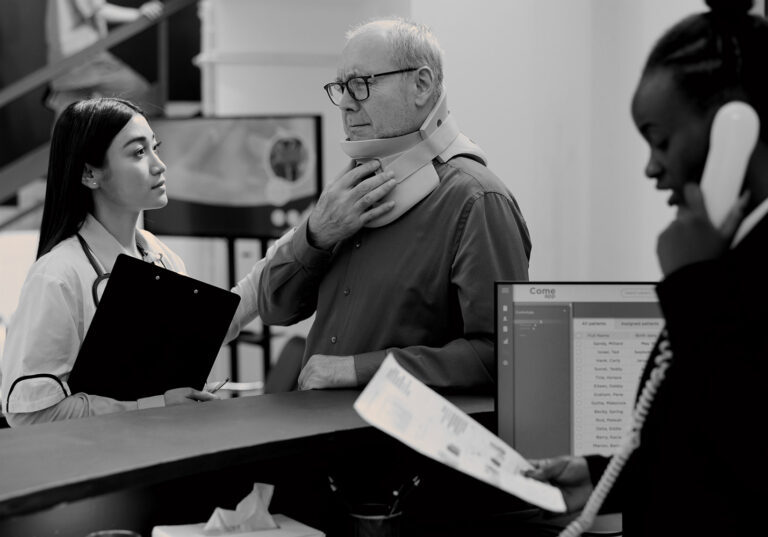The Cervical spine protects the Cervical Spinal cord while moving, rotating, twisting, and bending in multiple directions and planes. Each vertebra has a specific function. The lower five vertebrae – C3 through C7, can flex, extend, rotate, and bend side-to-side, limited by the disc in front, two facet joints in the back, and by the various ligaments present in and around the spine.
On the other hand, the Occiput/Skull is generally limited to flexing (down to 25 degrees) and extending (up to 25 degrees), with limited rotation (to 8 degrees), all by virtue of its connection to C1 via certain ligaments. C1, in turn, can rotate about the Odontoid extension of the C2 Axis, to the tune of about 25 degrees each way with only about eight degrees of flexion and extension. It is crucial here to understand that C1 normally does not laterally slide on C2. Its motion is largely limited to rotation about the Axis via the stability provided by certain ligaments. If these ligaments are injured, then lateral sliding of C1 on C2 occurs, which sets off the cascade of post-whiplash migraine headaches and a host of neurological and other symptoms known as the Whiplash Associated Disorder / Cranial Cervical Syndrome.
So, what creates the limits of the respective motion of all of these structures? Each vertebra is attached to the next via ligaments – the bungee cords of the vertebral column. I mentioned the anterior and posterior longitudinal ligaments running up the entire spine, as well as ligaments about the facet joints.
For our purposes, we will focus on the ligaments of the upper cervical spine. Thus, C1 is connected to C2, most importantly for understanding whiplash injuries via the transverse ligament around the odontoid or dens. The two alar ligaments connect the odontoid process of C2 to the lateral masses of C1 and to the occipital condyles or lowest joints, of the skull.


The transverse ligament limits the forward motion of C1 on C2 and facilitates the rotation of C1 on C2. The alar ligaments act to limit lateral sliding of C1 on C2 and act as check ligaments to limit rotation of the skull on C1. We will see later the crucial importance of the transverse and alar ligaments to whiplash injuries to the neck and the Whiplash-Associated Disorder and Cranial-Cervical Syndrome (WAD/CCS).



